Kharg Island
Kharg Island is one of the islands in the Persian Gulf. It is believed to be more than 14,000 years old. It is made of coral and has a length of 8 km. and is 4-5 km. in breadth.
Despite its small, rectangular shape, this island is one of the most important terminals of oil export in the world. It also holds considerable commercial, economic, military, and historical importance.
Kharg Island is also referred to as the “Orphan Gem” of the Persian Gulf. It has a long history of inhabitation and has housed many historical monuments such as a fire temple related to the Sassanid era, a Dutch castle, an Islamic cemetery, the Palmiran temples, a Christian cemetery, a Dutch garden, a cemetery of the Pre-Islamic era, the tomb of Mir Mohammad Hanafieh, the tomb of Delman or two sisters, and an Achaemenid inscription of 2400 years old in ancient Persian language and cuneiform script.
If you are curious and eager to learn more about the Ancient City of Kharg, stay with us to learn about all its secrets.
Where is Kharg island?
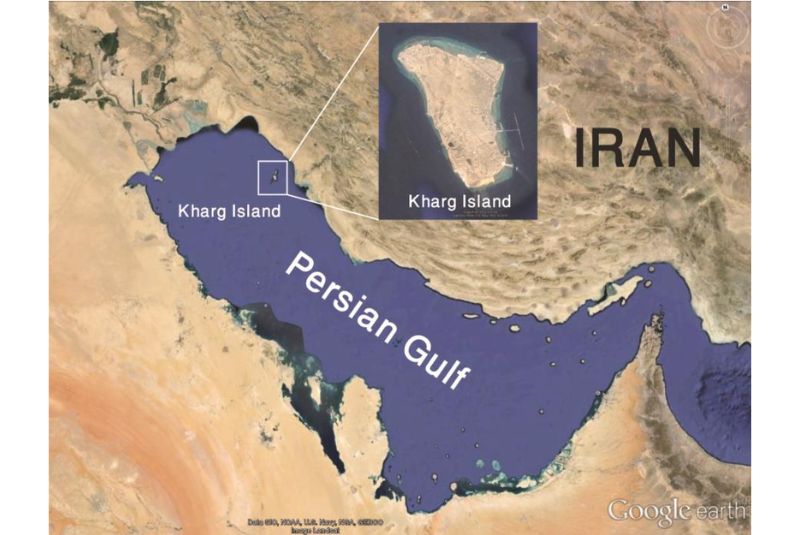
Kharg Island is situated in the Persian Gulf, near the coast of Genaveh Port in Bushehr Province, Iran. Geographically, it is positioned approximately 57 km northwest of Bushehr and 38 km from Genaveh.
Its strategic location near the coast makes it an important hub for maritime activities and plays a significant role in the region's trade and commerce, particularly in the oil industry.
| Read more: Persian Gulf Islands - A Traveler's Guide to Iran's Coastal
About Kharg Island
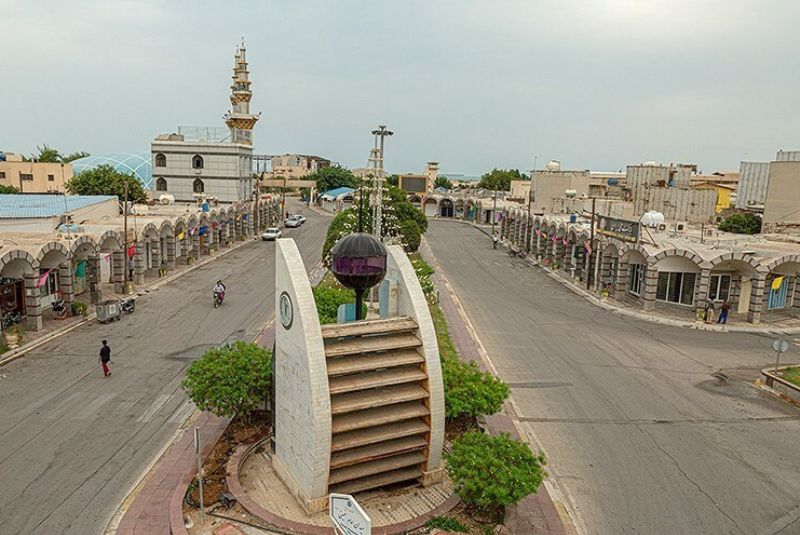
Kharg Island is a unique and remarkable testament to nature. Its distinct climate and soil type set it apart from other regions in Iran. The island experiences hot and humid summers, and its highest point, Mount Didehban, stands at 87 meters above sea level. The island's formation is the result of gentle geological folds that create an arch-like shape.
The composition of Kharg Island's texture is a fascinating blend of fossils, coral limbs, bivalves, and other marine creatures mixed with sand. Only a thin layer of the island's surface, ranging from twenty centimeters to five meters in thickness, is sufficiently hard.
While many islands in the Persian Gulf suffer from a scarcity of freshwater, Kharg Island is fortunate to have an abundance of it. Throughout history, natural pits, drilled wells, and qanats have been utilized to collect surface water and seasonal rains, directing them into designed dams or natural underground reservoirs.
Remarkably, the wells on Kharg Island still hold ample reserves of freshwater. Some of these wells, no longer extensively used, remain as they were in the past. However, others have dried up, leading locals to plant grapevines in their depths. These grapevines thrive solely on the moisture present at the bottom of the well or the hidden freshwater among the sands and fossils. They produce hundreds of kilograms of grapes annually, indicating the exceptional fertility of the soil and water within these dried wells.
| Related Tour Packages:
Kharg Island History
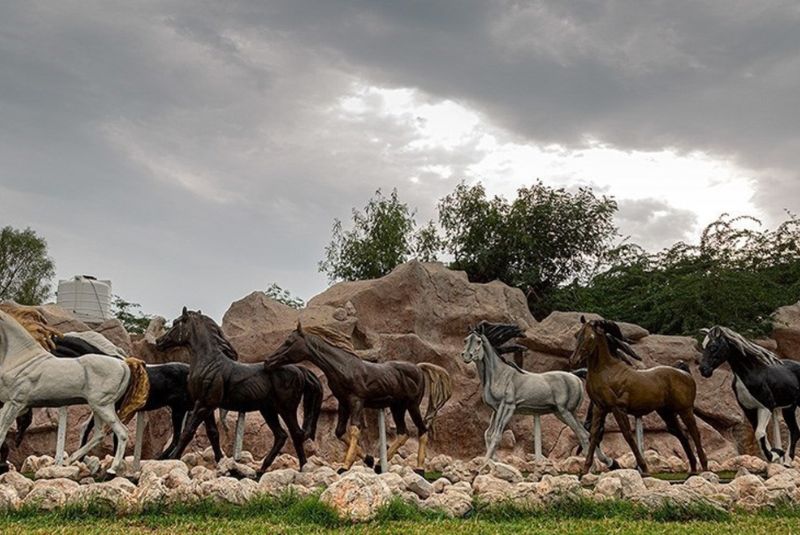
Kharg Island has a rich and captivating history, attracting the attention of Iranian, European, Greek, and Roman historians throughout different historical periods. It is believed to be more than 14,000 years old.
Greek historian Strabo referred to the island as Icaria and Icarus, adding to its mystical allure. Roman historian Pliny called it Aracia. Scholars like Roman Ghirshman suggested a connection between the name Khark and the Karkheh River, while Saeed Nafisi proposed that Kharg Island was once part of the Characene territory, giving rise to its name.
The historical monuments on Kharg Island bear witness to its ancient past. Evidence of settlements from the Sassanid era and possibly even earlier civilizations can be found on the island. These traces of life date back to times preceding the birth of Christ when the island served as a home to its inhabitants.
Today, the ancient city of Kharg is one of the most important terminals of oil export in the world and many tourists visit this beautiful island to visit its historical monuments. It also holds considerable commercial, economic, military, and historical importance.
| Discover: Why Explore Iran's Ecotourism Wonders
Kharg Island Significance
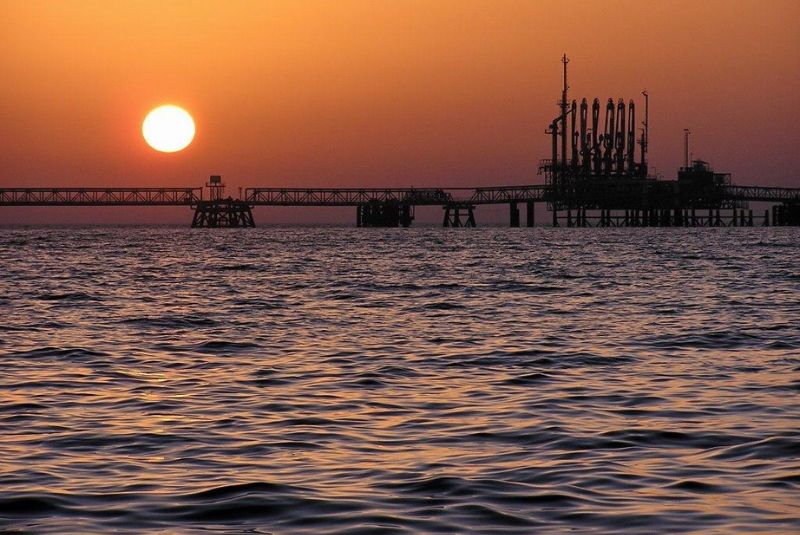
Kharg Island holds immense significance in the oil industry, functioning as a crucial port for Iran's crude oil exports. Its strategic importance was evident during the Iran-Iraq War when the majority of Iran's oil exports, around 90%, were channeled through this island.
The island endured relentless Iraqi airstrikes, becoming a target over 2,800 times. Notably, dating back to 1916, a railway line was established on Kharg Island to transport stones for constructing the Basra to Baghdad railway line and the foundations of oil refinery tanks in Abadan.
This railway, operated by British engineer officer Captain Thompson, showcases the island's historical ties to the oil industry and its pivotal role in supporting infrastructure development.
Vegetation on Kharg Island

The unique characteristics of Kharg Island have prevented a variety of trees and plants from growing there. However, one of the trees that do thrive on this island, and indeed the main type of vegetation, are the Lur or Leel trees, also known as the sacred fig trees. These trees, like Kharg Island itself, possess unique features.
It might interest you to know that the Lur or Leel trees are large and create extensive shade. These trees have many roots, and their remarkable feature lies in these numerous roots.
The roots of the Lur or Leel trees are aerial, meaning instead of growing downward into the soil, they grow upwards, wrap around the trunk, climb up, and then hang down from the branches.
In addition to the Lur or Leel trees, the Sidr or Konar trees also grow on Kharg Island and are found in significant numbers. However, it should be noted that due to insufficient growth conditions on Kharg Island, the Sidr or Konar trees do not flourish as well.
Wildlife on Kharg Island
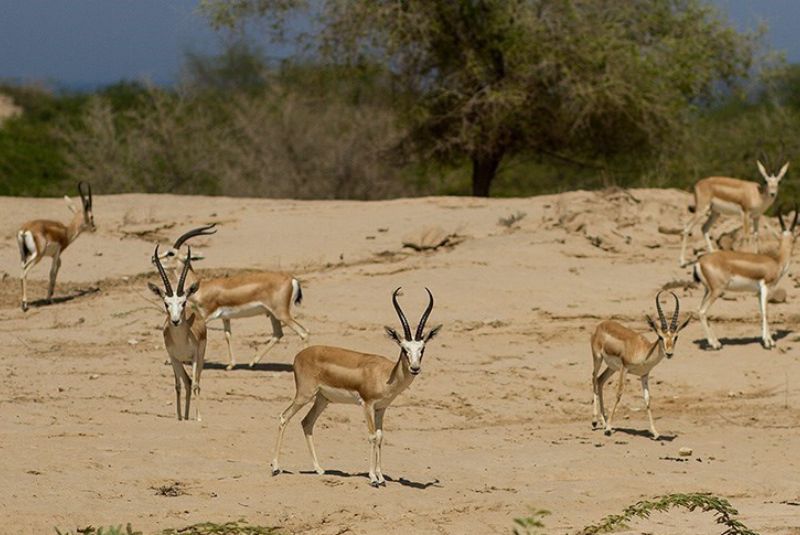
The unique climate of Khark Island undoubtedly creates a special habitat for animals, and as a result, we see unique and specific species of animals on this island.
Interestingly, there are limited herds of a special type of gazelle on this remarkable island. In addition to these unique gazelles, a type of long and venomous snake also resides on the island. These snakes are said to reach a length of one and a half meters.
| Read more: Iran's Wildlife - A Nature Lover's Guide + Pics
Historical Monuments in Kharg Island
Kharg Island, with its long-standing history, is home to various historical monuments that bear witness to its rich past. These monuments provide insights into the settlement of the Sassanids and possibly even earlier civilizations on the island. Let's explore some of these historical landmarks in Kharg Island:
Ancient Cemetery of Kharg
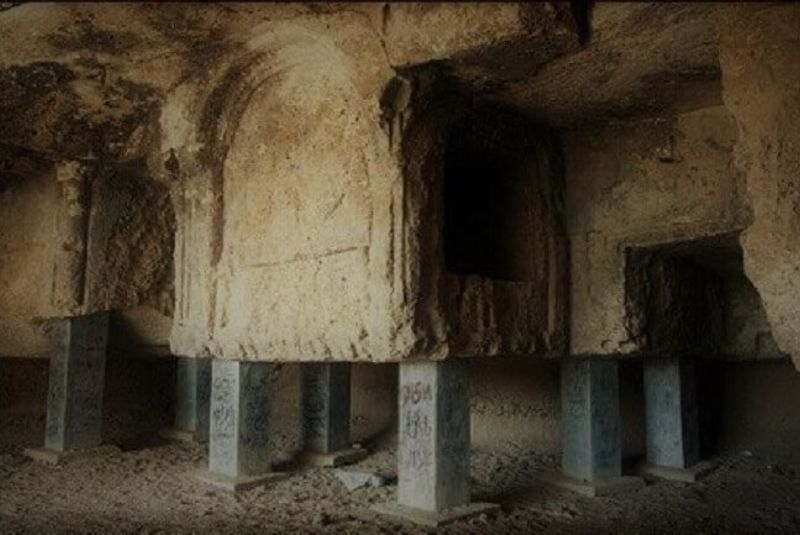
Interestingly, on Kharg Island, in the mountainous part of the island, you will see the ancient cemetery of Kharg with numerous graves carved into the mountainside. The age of this cemetery indicates its antiquity, but unfortunately, no precise date is available.
The rock-cut tombs of Kharg are found in this cemetery and have short entrances, suggesting Zoroastrian influences. Surprisingly, there are also graves with short entrances bearing the image of a cross, suggesting that Christians also buried their dead here.
Although some graves have been excavated or reused due to continuous occupation, intact tombs remain, containing small glassware, inexpensive jewelry, and bronze mirrors.
Sassanid Fire Temple on Kharg Island

Many indications of the Sassanid presence or their interest in Kharg Island are evident. Interestingly, there is a fire temple on this island, believed to date back to the Sassanid period.
This fire temple is located on the eastern side of the Imamzadeh Mir Mohammad shrine and atop a mountainous area. In modern times, this fire temple has been completely destroyed, and nothing remains of its former glory. However, the trace is still there and can be tracked.
Dolmen Grave on Kharg Island
On the large mountain of Kharg Island, two large rocks can be seen positioned crosswise. Ghirshman claimed that these stones are a dolmen grave, dating back three thousand years.
According to Ghirshman, the stones date back to pre-Christian times. However, the locals of Kharg call these two rocks "the sisters." They believe that, in ancient times, these two sisters prayed to God to be freed from foreign captors, and in that moment, they were turned to stone.
A similar legend exists on another Persian Gulf island, Hengam Island, where a mother and daughter were turned to stone after praying to be freed from foreign captors.
Imamzadeh Mir Mohammad Hanafieh
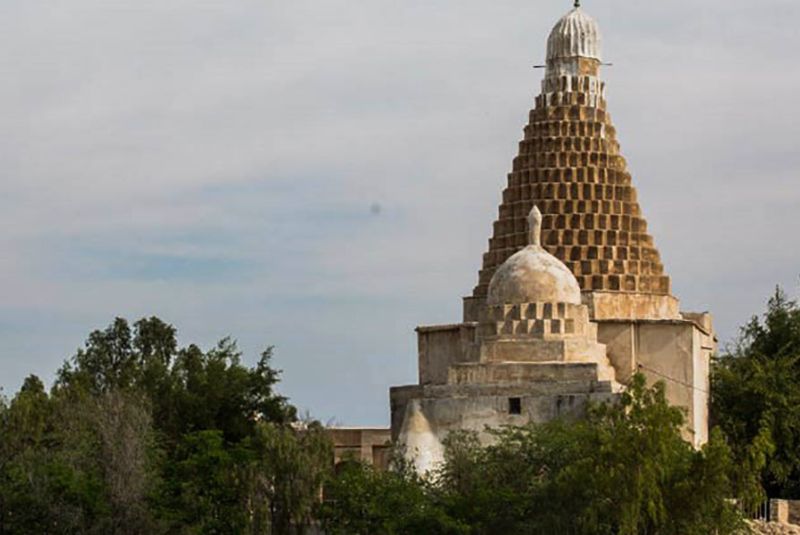
The Imamzadeh Mir Mohammad Hanafieh Tomb is a popular historical site among many ancient landmarks on Kharg Island. This significant and well-loved historical site is located in the southwestern part of Kharg Island.
The tomb dates back to the year 1338. This historical structure, made of brick and mud, features two domes. One dome is large and serrated, while the other is small and rounded. Additionally, the interior of this tomb is adorned with exquisite tile work.
Imamzadeh Mir Mohammad Hanafieh is one of the important pilgrimage sites in southern Iran. This historical building is registered as number 2205 in the list of national monuments of Iran.
The Portuguese Castle on Kharg Island

Another historical landmark on Kharg Island is the Portuguese Castle. During their occupation of southern Iran, the Portuguese entered all the islands of the Persian Gulf and left their mark on each of them. Kharg Island was no exception.
The Portuguese Castle on Kharg Island was built in 1748 by order of Baron Kniphausen. Currently, all the fortifications of this castle have been destroyed.
Other Historical Sites on Kharg Island include:
- Christian Cemetery
- Water Reservoir
- Aqueduct
- Sunni Cemetery
- Tomb of Pir Alamdari
Bottom Line
Kharg Island is one of the islands in the Persian Gulf believed to be more than 14,000 years old. It is a captivating destination that intertwines history, culture, and industry.
Its historical monuments, such as the ancient cemetery and Imamzadeh Mir Mohammad Hanafieh, provide glimpses into the island's ancient civilizations and religious diversity.
Additionally, Kharg Island's strategic location in the Persian Gulf has made it a vital port for Iran's oil industry, playing a significant role in the country's economy.
Share your story!
Comment below and let us know about your Experience.
Your story inspires others!


Comment
Leave a Comment